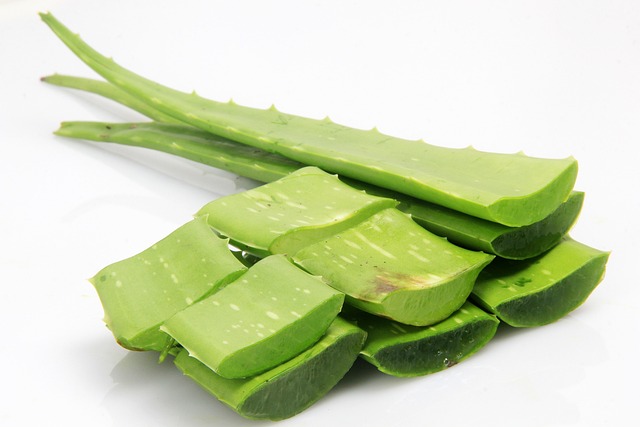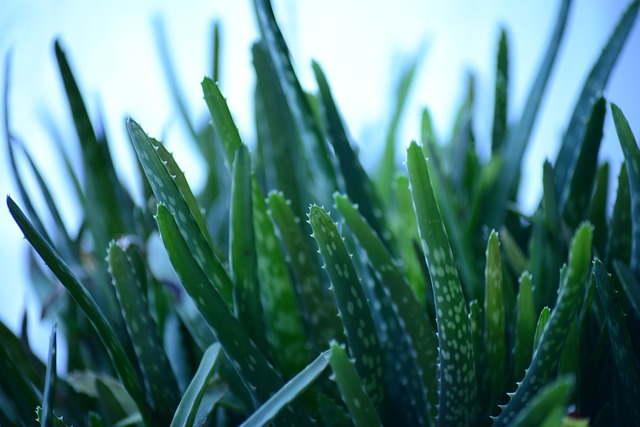Aloe is native to the Mediterranean coastal areas and grows well in warm, sunny, dry climates. The medicinal part discussed in this article is the Aloe Gel – the clear, jelly-like substance of the inner leaf, often referred to as the inner filet.
Aloe Gel is:
- Anti-inflammatory,
- Analgesic,
- Antihistaminic,
- Antimicrobial,
- Antifungal.
Therefore, it is often used to control:
- Inflammation,
- Arthritis,
- Fever,
- Itching,
- Mild burns,
- Skin lesions like psoriasis and wounds.
It is also used for gastro-duodenal ulcers, diabetes, and asthma.
For Gastrointestinal Effects:
Use 2 tablespoons three times a day for gastritis, gastric-reflex disorders, and gastric and duodenal ulcers. Aloe Vera also has been shown to kill H. pylori bacteria.
Aloe Vera interferes with histamine’s ability to bind to the stomach’s parietal cells that produce hydrochloric acid (HCL). An adequate amount of HCL is necessary for protein digestion. However, if the mucosa (inner lining) in the duodenum (part of the small intestine) has been damaged or a reduction of sodium bicarbonate released from the pancreas to neutralize the acid, an ulcer may begin to form.
H. Pylori bacteria encourages inflammation in the stomach (gastritis). Aloe Vera inhibits inflammation. Take 1-2 fluid ounces of Aloe Vera gel after a meal for heartburn, gastritis, and ulcers.
A pain reliever
Aloe can also help relieve pain due to its anti-inflammatory properties by reducing the production of a hormone, PGE-2, that suppresses the immune system and fuels the fires of inflammation.
Aloe is most known for skin and wound healing due to its vitamins C and E and zinc content and its moisturizing, emollient, and antibacterial action. It also stimulates the cells in connective tissues that produce protein and collagen needed for repair and “gluing” skin (etc.) back together. It can be beneficial for bone, tendon, ligaments, and cartilage repairs.
What not to do
However, Aloe is not recommended to heal incision (surgical) wounds. We also do not recommend using the whole plant or aloe latex. We only recommend the use of the inner filet, the jelly part. The outer leaf can be irritating to the mucous membranes. Also, Aloe should not be used internally with hypothyroidism. Check with your pharmacist to avoid any drug/herb interaction. Aloe can be safely used long-term at a dosage of 1 Tablespoon, 3-4 times a day.
Using Aloe in Recipes

Trim off the base and end of the leaf, along with the spiky serrated edges. Soak the leaf, completely submerging it to let the latex leech out. The water will turn a cloudy yellow. Pour the water off and add more water until the water remains clear.
Slide a knife between the skin and the gel to separate them. You want to keep the gooey translucent gel. Rinse the gel until it loses its slimy texture. Now it is ready to use!
Use in salad dressing and creamy dishes as a thickener or in smoothies.
Lemon Aloe Breakfast Pudding
Yield: 1 serving
- 1 cup Vanilla Almond Milk
- 1 Tablespoon Prepared Aloe
- 3 Tablespoon White Chia Seeds
- 1 Tablespoon Honey
- ¼ teaspoon Lemon Extract
Stir all ingredients together until well-mixed. Cover and refrigerate for 8 hours. Stir before serving. Top with granola or berries, and enjoy!
If you would like to learn more about herbal remedies, visit https://www.abundanthealthwellnesscenter.org/
You can Start a New YOU!®
Author: Dana West, RD, LD, DIPACLM, is the Dietitian at Abundant Health Wellness Center in Eureka Spring, Arkansas.
References:
- https://www.healthline.com/health/7-amazing-uses-aloe-vera
- https://www.nccih.nih.gov/health/aloe-vera
Featured Image by PollyDot from Pixabay
